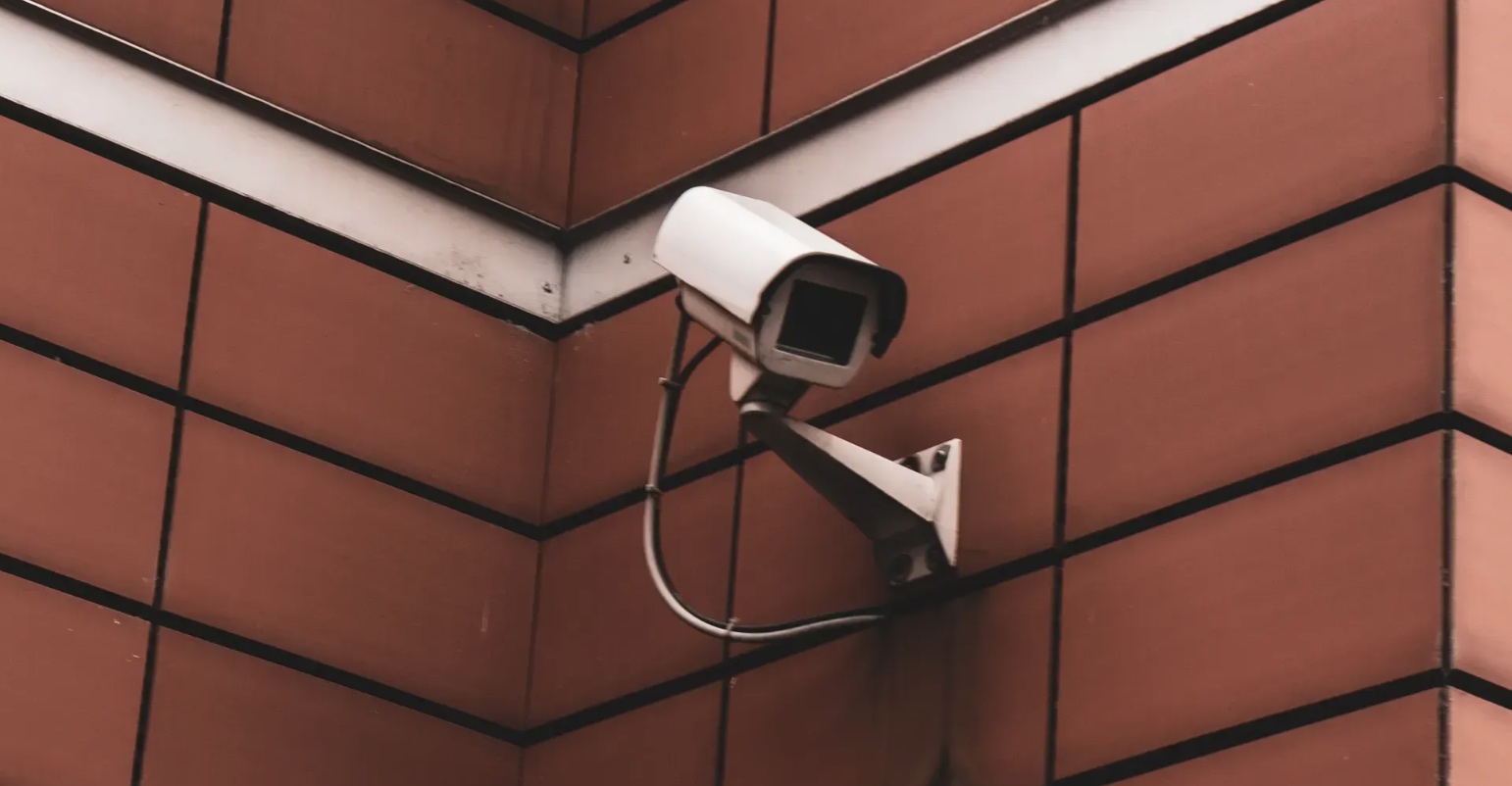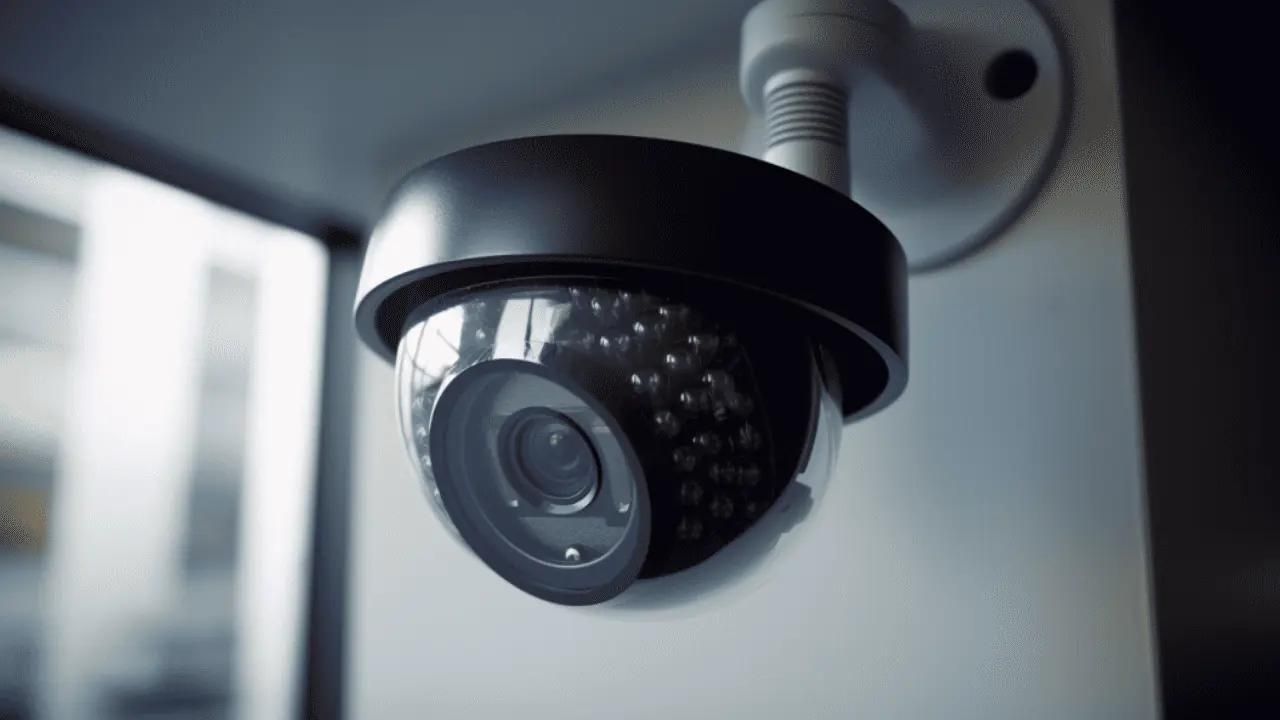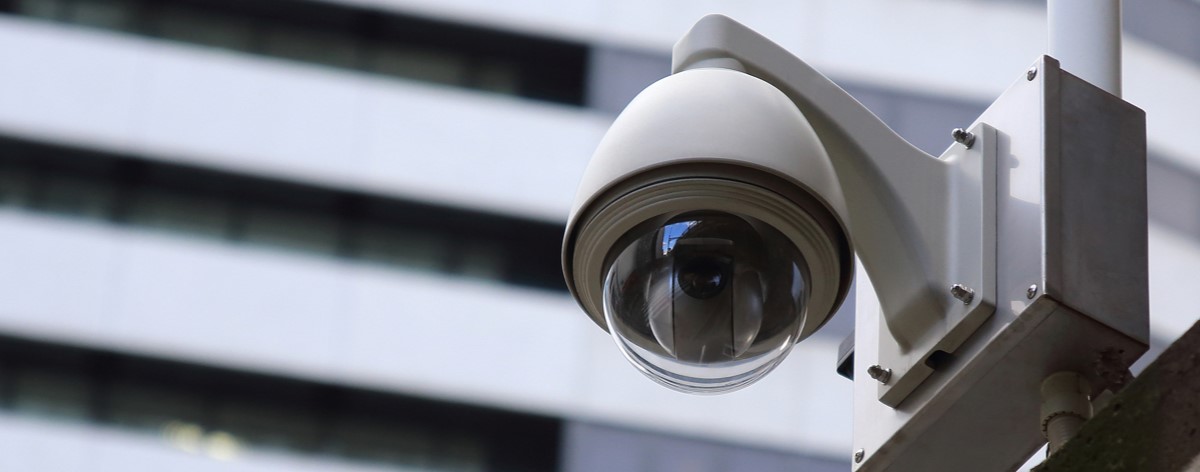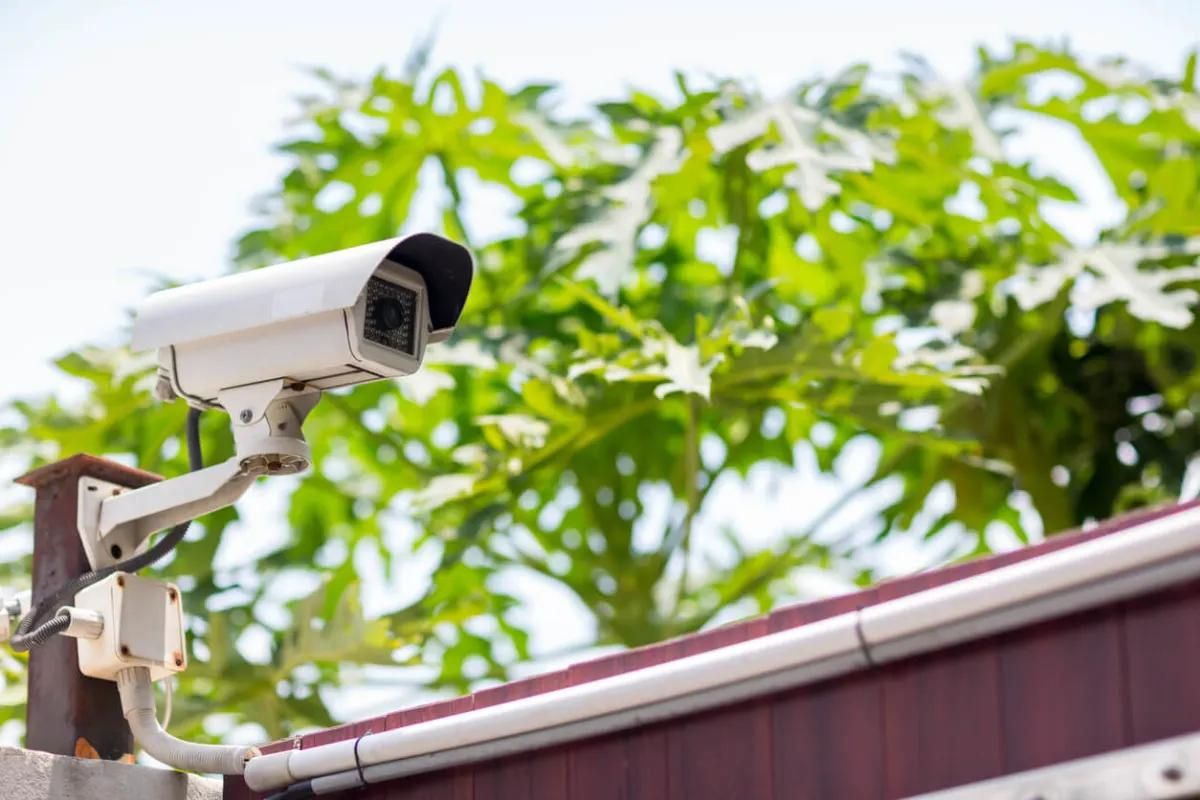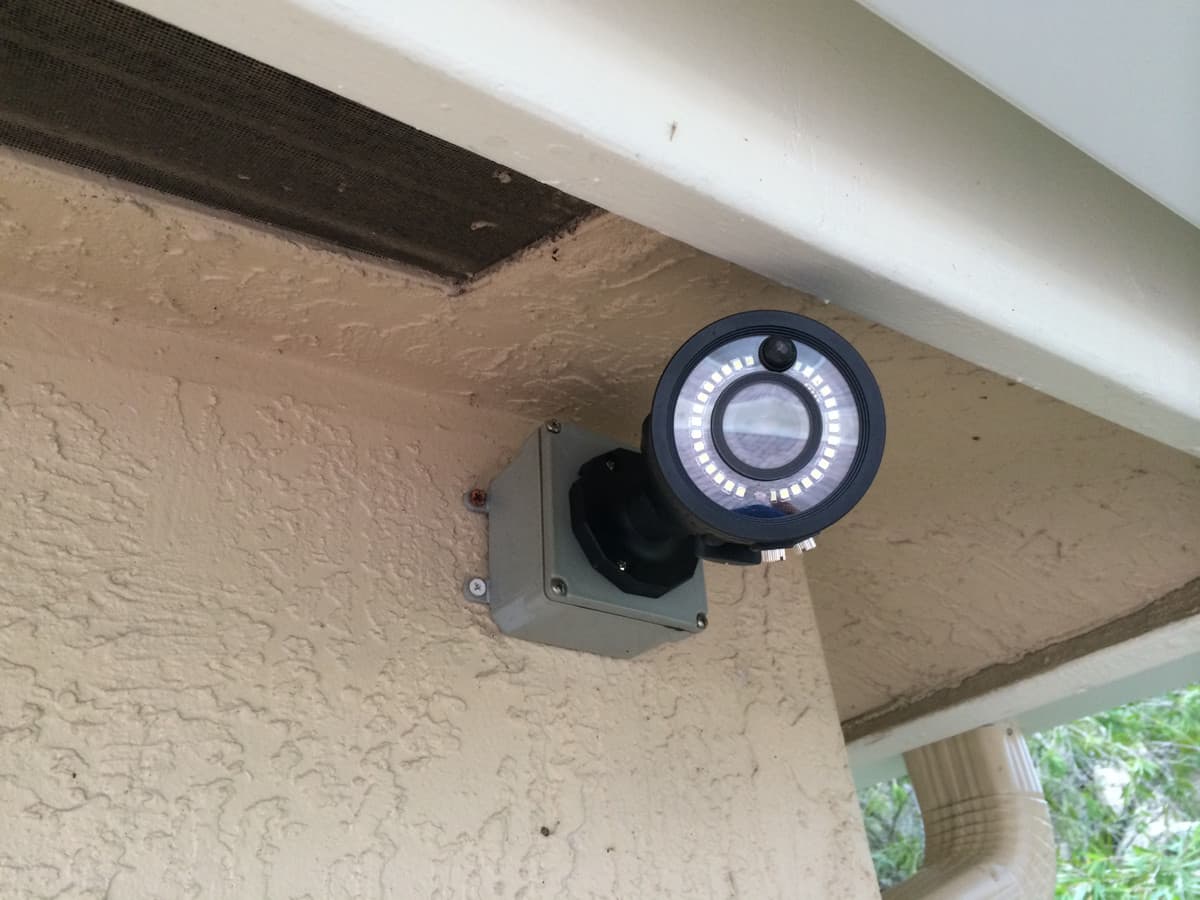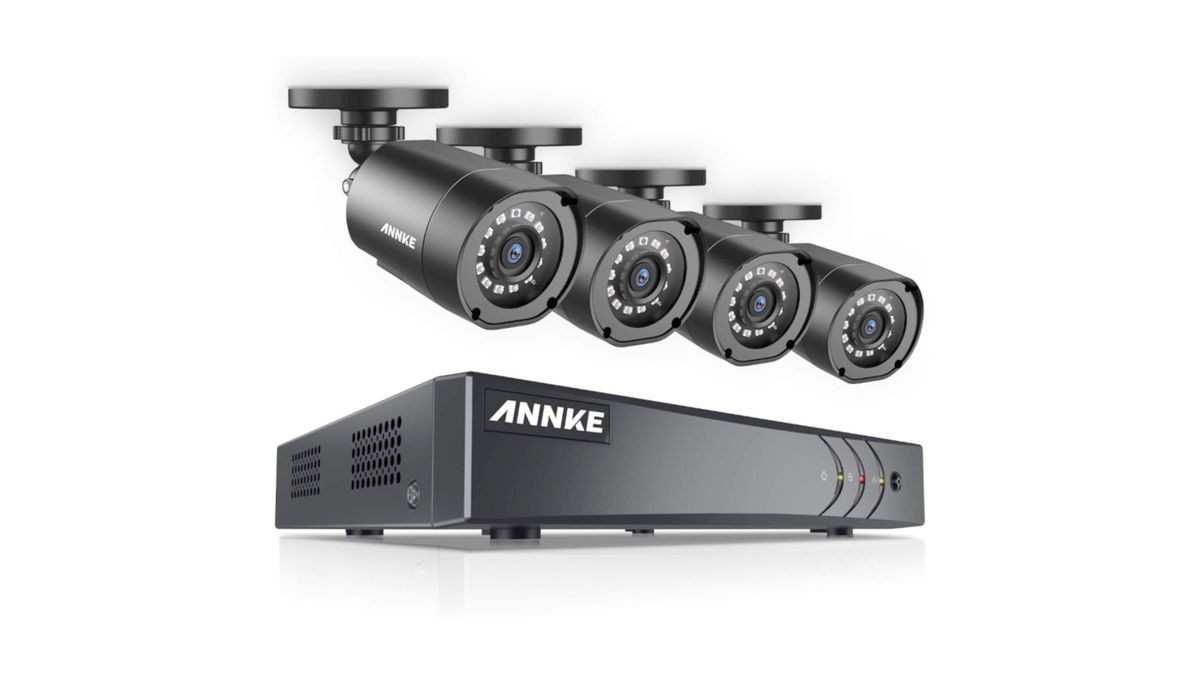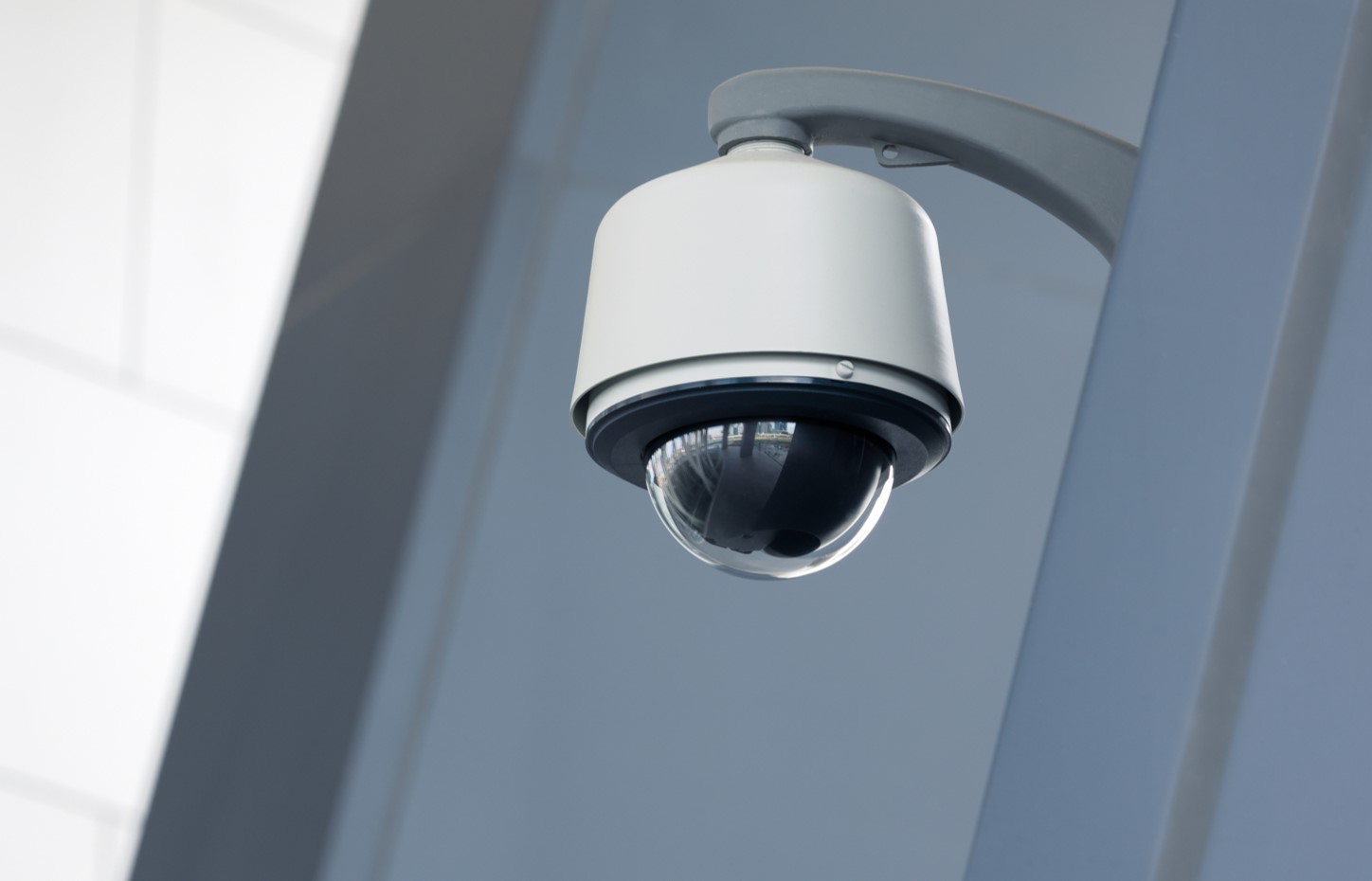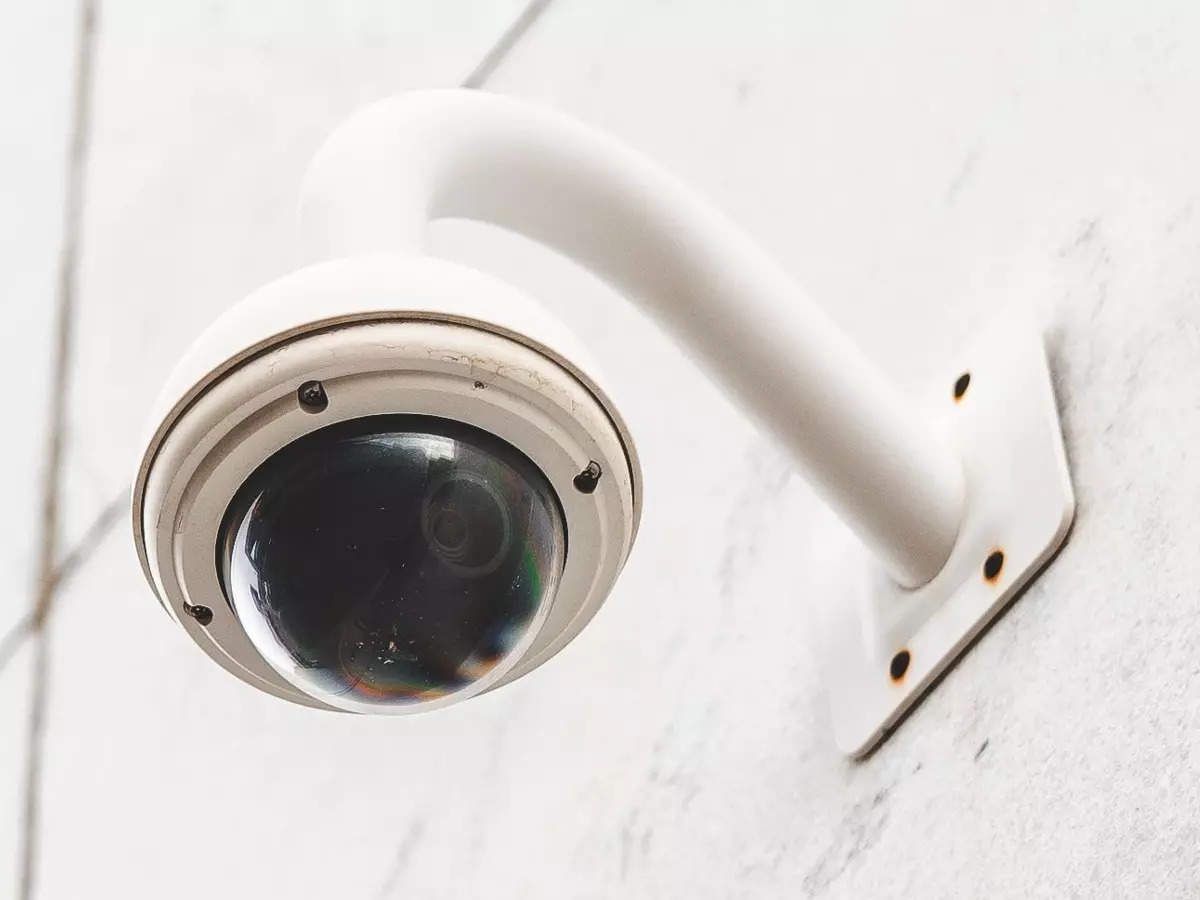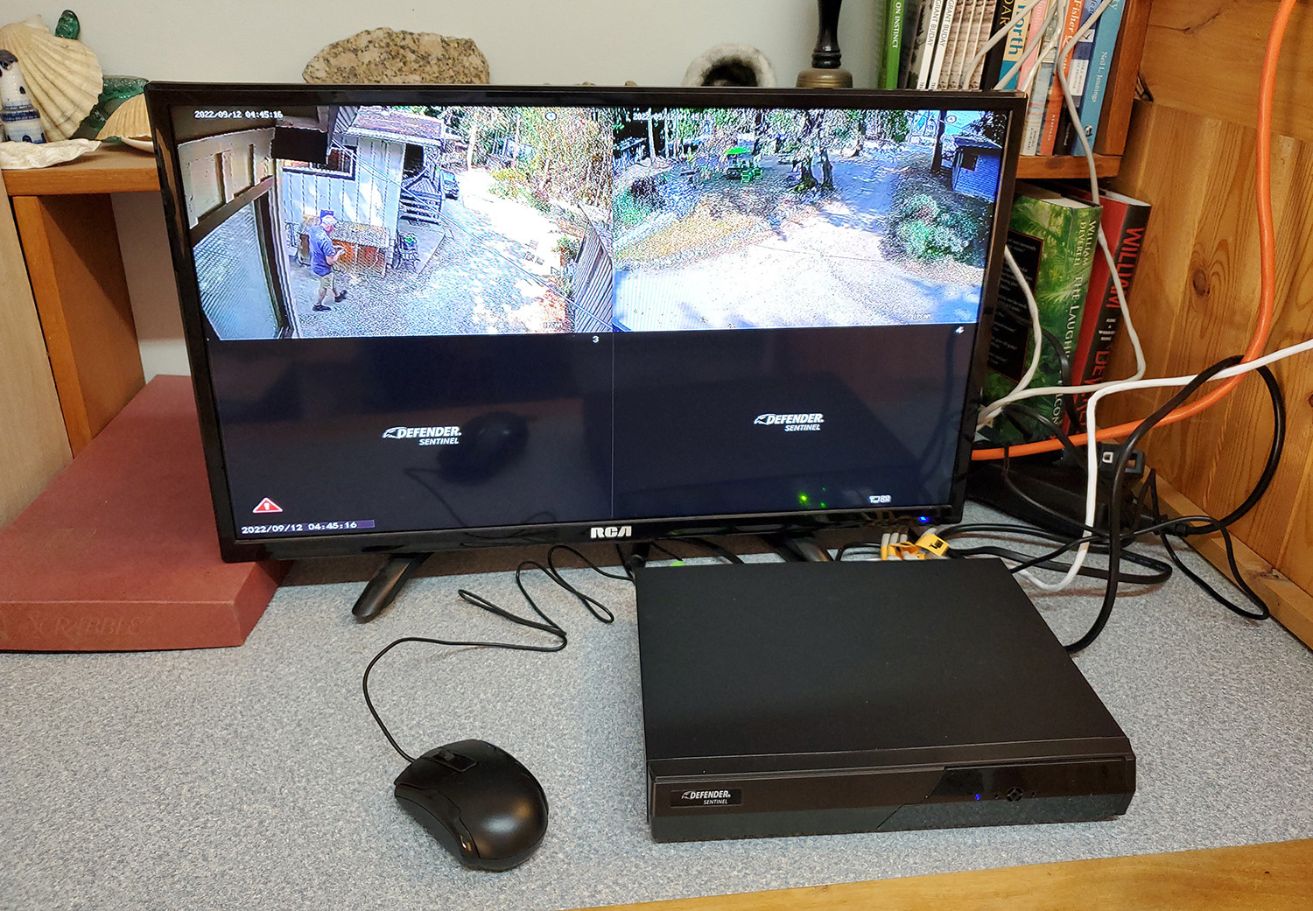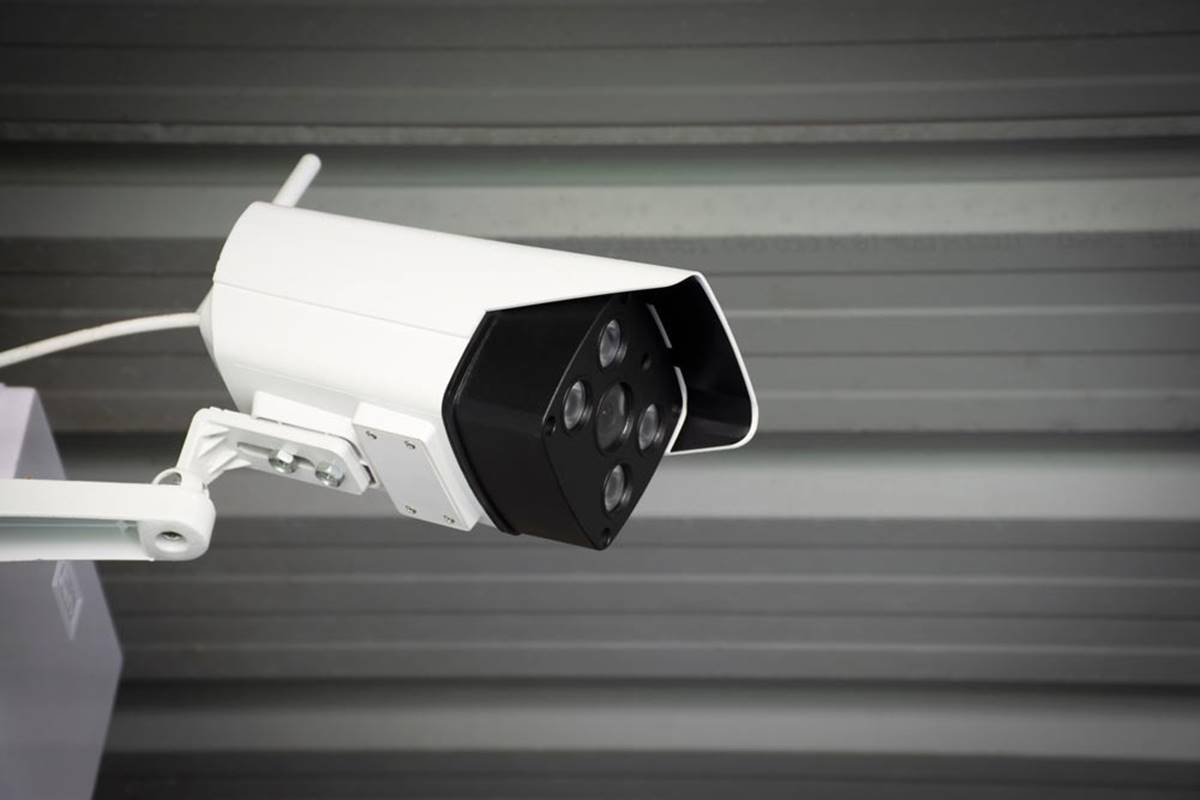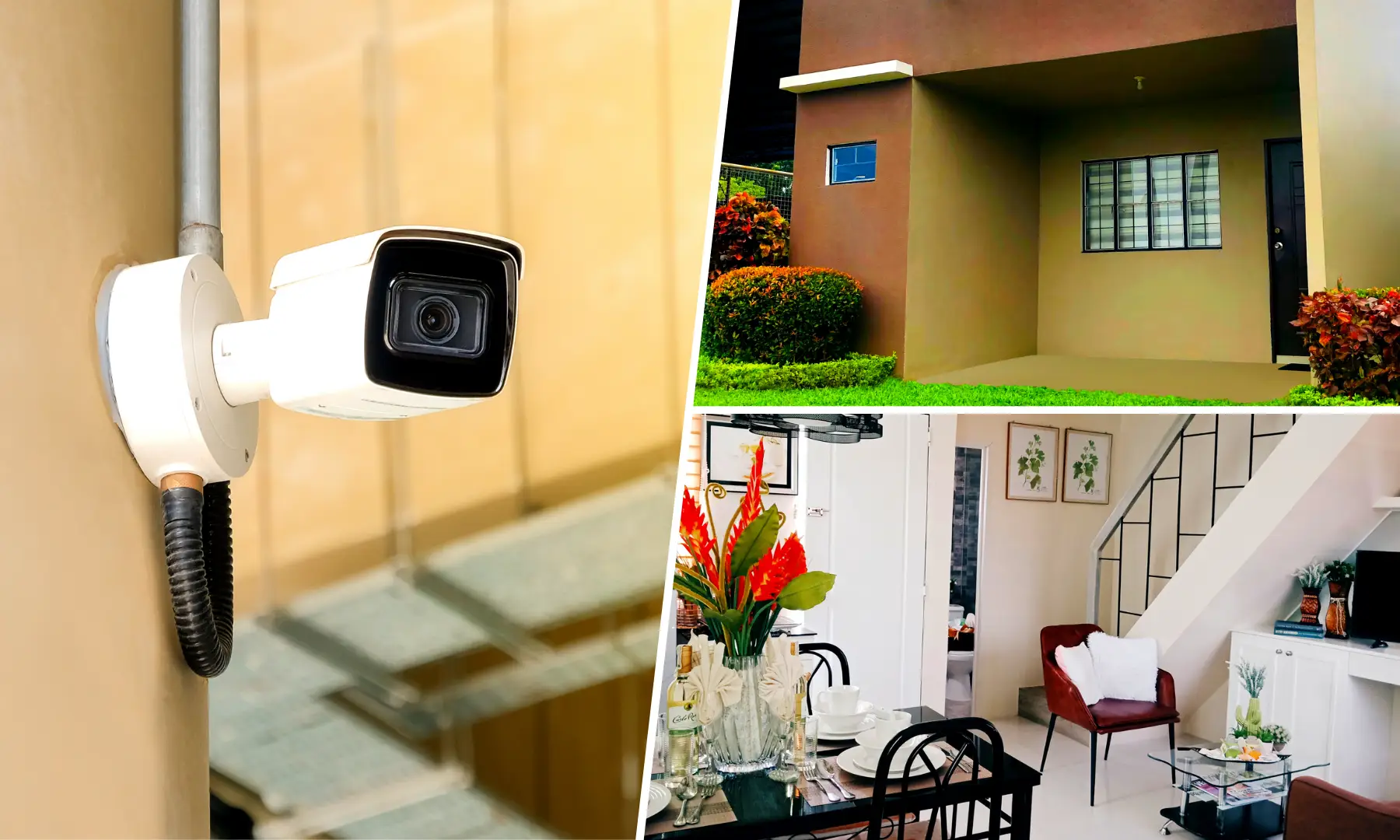Home>Home Security and Surveillance>What To Look For In A Home Security Camera System


Home Security and Surveillance
What To Look For In A Home Security Camera System
Modified: March 7, 2024
Looking for a reliable home security camera system? Learn what to look for in terms of surveillance, features, and ease of use. Find the perfect solution for your needs.
(Many of the links in this article redirect to a specific reviewed product. Your purchase of these products through affiliate links helps to generate commission for Storables.com, at no extra cost. Learn more)
Introduction
Welcome to our comprehensive guide on what to look for in a home security camera system. As crime rates continue to rise, ensuring the safety and security of our homes has become a top priority. Installing a reliable home security camera system is an effective way to deter potential intruders and provide peace of mind.
With so many different options available in the market, it can be overwhelming to choose the right camera system for your specific needs. That’s why we’ve put together this guide to help you understand the key features and factors to consider when selecting a home security camera system.
Whether you’re looking to protect your home from burglaries, keep an eye on your children and pets, or monitor your property remotely, these tips will assist you in making an informed decision. Let’s dive in and explore the essential aspects of a home security camera system that you should be aware of.
Key Takeaways:
- Invest in a home security camera system with high resolution and night vision for clear footage day and night. Ensure wide field of view, remote access, and motion detection for comprehensive surveillance.
- Consider integration with other devices, easy installation, and responsive customer support. Compare costs and choose a system that meets your security needs and budget.
Camera Quality
The first and most crucial factor to consider when choosing a home security camera system is the camera quality. A high-quality camera will provide clear and detailed footage, allowing you to identify any potential threats or individuals with ease.
Look for cameras with a high resolution, preferably in HD or even 4K. This ensures that the images captured are sharp and clear, enabling you to see important details such as facial features or license plate numbers. A higher resolution also means greater digital zoom capabilities without compromising image quality.
In addition to resolution, pay attention to the camera’s image sensor. A larger sensor will capture more light, resulting in better low-light performance and improved image quality overall. This is especially important if you plan on installing cameras in areas with limited lighting or during nighttime.
Another factor to consider is the camera’s lens quality. A high-quality lens will provide a wide field of view, allowing you to cover more area with fewer cameras. Look for cameras with lenses that have a low f-number, as this indicates a larger aperture size and better light-gathering ability.
Lastly, consider whether the camera is equipped with image enhancement technologies such as digital noise reduction or image stabilization. These features can greatly improve the overall quality of the footage and ensure smoother video playback.
Remember, investing in a home security camera system is all about capturing clear and detailed footage. Don’t compromise on camera quality, as it is the foundation of an effective surveillance system.
Night Vision
When it comes to home security camera systems, the ability to capture clear footage during nighttime is crucial. That’s where night vision technology comes into play. A good home security camera system should have high-quality night vision capabilities to ensure your property is protected around the clock.
When evaluating the night vision feature of a camera system, there are a few key factors to consider. One of the most important is the range of the night vision. Look for cameras that can illuminate a large area, allowing you to see clearly even in complete darkness. The range should be specified by the manufacturer and can vary from a few feet to several tens of feet.
In addition to range, pay attention to the type of night vision technology used. Most cameras use either infrared (IR) LEDs or low-light sensors to capture images in the dark. Infrared cameras emit infrared light that is invisible to the human eye but is picked up by the camera sensor. Low-light sensors, on the other hand, are designed to capture more light in low-light conditions.
Both technologies have their advantages and disadvantages. Infrared cameras tend to have a longer range and provide better visibility in total darkness. However, they may produce a black and white image, and the IR LEDs can be seen by intruders. Low-light sensors, on the other hand, can capture color images in low-light conditions, but their range may be limited.
Another important consideration is the camera’s ability to switch between day and night modes automatically. Look for cameras that have an ambient light sensor or an infrared cut filter, which allows the camera to adjust its settings depending on the lighting conditions.
Overall, having a home security camera system with reliable night vision capabilities is essential for 24/7 surveillance. Make sure to choose cameras that can capture clear and detailed footage even in low-light or complete darkness.
Field of View
When selecting a home security camera system, considering the camera’s field of view is crucial. The field of view refers to the area that the camera can capture and monitor. It determines how much of your property will be covered by each camera.
Cameras with a wide field of view are ideal for monitoring large areas, such as a backyard or driveway. They can capture a broader perspective, allowing you to see more details and potentially reduce the number of cameras needed to cover an area effectively. Wide-angle lenses are commonly used to achieve a wider field of view.
On the other hand, cameras with a narrow field of view are better suited for focusing on specific areas with high detail. For instance, if you want to monitor the entrance of your home or a valuable object, a camera with a narrower field of view can provide more precise and detailed footage.
It’s important to strike a balance between having cameras with a wide field of view and those with a narrow field of view, depending on your specific surveillance needs. A combination of both types of cameras can ensure comprehensive coverage of your property.
Additionally, some cameras offer the option to adjust and customize the field of view. This can be particularly beneficial if you need to monitor specific areas within the camera’s range. Look for cameras that allow you to pan, tilt, or zoom to focus on different areas as needed.
Lastly, consider the placement of the cameras in relation to their field of view. Make sure to position the cameras strategically so that they cover the vulnerable and high-traffic areas of your property. Proper placement, along with the right field of view, will maximize the effectiveness of your home security camera system.
Resolution
Resolution is a crucial factor to consider when choosing a home security camera system. It refers to the level of detail and clarity that the camera can capture in its footage. Higher resolution cameras can provide sharper and more detailed images, allowing you to easily identify important details such as faces or license plates.
Resolution is typically measured in pixels, and the two most common resolutions for home security cameras are HD (High Definition) and 4K (Ultra High Definition). HD cameras have a resolution of 720p or 1080p, while 4K cameras have a resolution of 2160p. The higher the resolution, the more detailed the images will be.
When choosing a resolution, consider the specific needs of your surveillance requirements. If you primarily need to monitor a small area, such as a door entrance, a lower resolution camera may suffice. However, if you want to cover larger areas or require detailed footage for identification purposes, a higher resolution camera is recommended.
It’s worth noting that higher resolution cameras may require more storage space to store the recorded footage. Before investing in a camera with a higher resolution, make sure you have sufficient storage capacity or consider cloud storage options.
Additionally, keep in mind that the resolution of the camera is not the only factor that affects the quality of the footage. The lens quality, image sensor, and image processing capabilities of the camera also play a significant role. Consider cameras that have a combination of high resolution and other advanced features to ensure optimal image quality.
Ultimately, the resolution you choose for your home security camera system should align with your specific surveillance needs. Evaluate the size of the area you want to monitor and the level of detail required to make an informed decision.
Read more: What Is Security Camera
Connectivity
Connectivity is a crucial aspect of a home security camera system that you shouldn’t overlook. It determines how the cameras communicate with the monitoring device or system, allowing you to access and view the live or recorded footage.
There are several connectivity options available, each with its own advantages and considerations:
- Wired: Wired connectivity involves physically connecting the cameras to the monitoring device or system using cables. This provides a reliable and stable connection, ensuring minimal interference. However, the installation process can be more complex and may require professional assistance.
- Wireless: Wireless connectivity eliminates the need for physical cables, making the installation process more flexible and convenient. Wireless cameras connect to the monitoring device or system using Wi-Fi or other wireless protocols. However, wireless connections may be subject to interference from other devices or obstacles, resulting in potential signal loss or instability.
- Powerline: Powerline connectivity allows the cameras to transmit data over the existing electrical wiring in your home. This can be a reliable option if you want to avoid wireless interference but don’t want to deal with the complexities of wired connections. However, powerline connectivity may require additional adapters or equipment.
- Cloud: Cloud connectivity involves storing the camera footage on remote servers and accessing it through an internet connection. This allows you to view the footage from anywhere using a mobile app or web browser. Cloud connectivity offers convenience and scalability, but it may come with subscription fees for cloud storage.
When choosing a camera system, consider your specific requirements and preferences regarding connectivity. If you prefer a more stable connection or have specific security concerns, a wired or powerline connection may be the best option. If flexibility and remote access are important to you, wireless or cloud connectivity might be more suitable.
Additionally, ensure that the camera system is compatible with your existing network infrastructure. Check if it supports the required Wi-Fi protocols or if it can be integrated with your home automation system for seamless connectivity.
By choosing the right connectivity option for your home security camera system, you can ensure reliable and convenient access to the surveillance footage, enhancing the overall effectiveness and usability of the system.
Storage
Storage is a critical aspect to consider when selecting a home security camera system. It determines how the recorded footage is stored, allowing you to review and access it when needed. There are two main storage options available: local storage and cloud storage.
Local Storage: Local storage involves storing the recorded footage directly on a device within your home, such as a DVR (Digital Video Recorder) or an NVR (Network Video Recorder). These devices typically have built-in hard drives that can store a significant amount of footage, depending on their capacity. Local storage provides you with complete control over your data and does not require an internet connection to access the footage. However, it may limit your ability to access the footage remotely unless the system has remote viewing capabilities.
Cloud Storage: Cloud storage involves storing the recorded footage on remote servers accessible through the internet. This option offers convenience and flexibility, as you can access the footage from anywhere using a mobile app or web browser. Cloud storage provides an additional layer of security, as the footage is stored off-site and is not vulnerable to physical damage or theft. However, cloud storage may come with subscription fees based on the amount of storage required and the duration of retention. Additionally, the accessibility of the footage may depend on the availability of an internet connection.
When considering storage options, assess your needs and preferences. Determine how long you want to retain the footage and how much storage capacity you require. If you need long-term storage or want to access the footage remotely, cloud storage might be a suitable choice. However, if you prioritize data privacy and control, local storage can be a viable option.
It’s also essential to consider the scalability of the storage solution. Ensure that the camera system allows for expandable storage, whether it’s adding more hard drives to a local storage device or upgrading your cloud storage plan.
Ultimately, choosing the right storage option for your home security camera system is crucial for ensuring that you can securely store and access the recorded footage according to your specific needs and preferences.
Motion Detection
Motion detection is a key feature to consider when selecting a home security camera system. It allows the camera to automatically detect and record any movement within its field of view, ensuring that you are alerted to potential threats or suspicious activity.
When evaluating the motion detection capabilities of a camera, there are a few important factors to consider:
Sensitivity: The sensitivity of the motion detection feature determines how easily the camera detects motion. Look for cameras that allow you to adjust the sensitivity level to avoid false alarms triggered by environmental factors like moving trees or passing cars. You should be able to customize the sensitivity to suit your specific surveillance needs.
Zone customization: Some cameras offer the option to define specific zones within the camera’s view where motion detection should be active. This is particularly useful if you have areas with high traffic or potential sources of false alarms. By customizing the motion detection zones, you can focus the camera’s attention on specific areas and reduce unnecessary alerts.
Alerts and notifications: Consider how the camera system notifies you of detected motion. Look for systems that offer real-time alerts through email, push notifications to your smartphone, or even SMS notifications. The ability to receive immediate notifications ensures that you can take timely action if any suspicious activity is detected.
Smart detection: Some advanced camera systems provide smart detection features, such as person detection or facial recognition. These technologies can differentiate between humans and other objects, minimizing false alerts and providing more accurate notifications. Smart detection can be particularly useful in high-traffic areas or if you want to focus on specific individuals.
Effective motion detection ensures that your camera system captures important events and footage without constantly recording irrelevant activity. It maximizes the efficiency of your surveillance system and allows you to focus on the events that matter.
When choosing a home security camera system, evaluate the motion detection capabilities and ensure that they align with your specific surveillance needs. Customizable sensitivity, zone customization, real-time alerts, and smart detection are all valuable features to consider for effective motion detection.
Look for a home security camera system with high resolution, night vision, motion detection, and remote access. These features will help keep your home safe and secure.
Two-Way Audio
Two-way audio is a valuable feature to consider when selecting a home security camera system. It allows you to communicate in real-time with whoever is within the camera’s range using both a built-in microphone and a speaker. This feature can greatly enhance the functionality and effectiveness of your surveillance system.
There are several benefits of having two-way audio functionality in your home security camera system:
Remote Communication: Two-way audio enables you to communicate with visitors, delivery personnel, or even potential intruders remotely. Whether you’re at work, on vacation, or simply away from home, you can use the camera’s microphone and speaker to have real-time conversations. This can be helpful for giving instructions, verifying identities, or simply deterring suspicious activity.
Monitoring and Interaction: With two-way audio, you’re not only able to listen to what’s happening in your home, but you can also talk back. This allows you to monitor your children, elderly family members, or pets while providing them with reassurance or giving them instructions when needed. It can also be used to interact with family members or pets when you’re away.
Deterrence: The ability to engage in a two-way conversation through the camera system can act as a powerful deterrent to potential intruders or unwanted visitors. Being able to communicate with them in real-time can make them think twice before engaging in any criminal activity. The presence of two-way audio can also be instrumental in enhancing home security and preventing incidents from occurring in the first place.
Enhanced Security: In emergency situations, two-way audio can be a lifeline for communicating with emergency services or calling for help. It can provide crucial information or allow you to take necessary actions, even when you’re not physically present in your home.
When selecting a home security camera system with two-way audio, consider the clarity and quality of both the microphone and speaker. Look for systems that provide clear and distortion-free audio, ensuring effective communication. Additionally, check if the system allows you to adjust audio settings or control the volume.
Two-way audio can be a valuable feature that adds an extra layer of security and convenience to your home surveillance. It allows you to actively monitor and interact with your surroundings, providing peace of mind and real-time communication in various situations.
Read more: What Are Security Cameras
Remote Access
Remote access is a crucial feature to consider when selecting a home security camera system. It allows you to access and monitor your camera feeds from anywhere, using a smartphone, tablet, or computer with an internet connection. Remote access offers convenience, flexibility, and peace of mind, as you can keep an eye on your property even when you’re away.
Here are some key benefits of having remote access to your home security camera system:
Real-Time Monitoring: Remote access enables you to view the camera feeds in real-time, allowing you to monitor your property no matter where you are. This is particularly valuable if you travel frequently, have a second home, or simply want to keep an eye on your loved ones and belongings while you’re at work.
Instant Alerts and Notifications: With remote access, you can receive instant alerts and notifications on your smartphone or other devices when motion is detected or any other events occur. This allows you to stay updated with potential threats, enabling timely response and action. You can also adjust the settings to receive notifications only for specific events or zones of interest.
Playback and Recording: Remote access typically allows you to access and playback the recorded footage from your cameras. This lets you review past events, identify any suspicious activity, or retrieve important footage as needed. Some systems also offer the ability to download or share specific recordings, providing evidence if required.
Multiple User Access: Many home security camera systems with remote access capabilities allow multiple users to access and view the camera feeds simultaneously. This is particularly useful for families or households with multiple individuals who want to monitor the cameras or receive alerts. Each user can have their own account with personalized access and settings.
When considering the remote access feature, check if the camera system requires the use of a dedicated app or if it can be accessed through a web browser. Ensure that the app or interface is user-friendly and provides a seamless experience for remote monitoring and control.
Additionally, consider the security measures in place for remote access. Look for systems that offer encryption and authentication to protect your camera feeds and prevent unauthorized access. Choose strong, unique passwords and keep your devices and apps updated to ensure the highest level of security for remote access.
Remote access provides the convenience and peace of mind of being able to monitor your home security camera system from anywhere. It allows you to respond quickly to potential threats, stay connected with your loved ones, and have complete control over your surveillance system even when you are not physically present.
Integration with Other DevicesIntegration with other devices is an important consideration when choosing a home security camera system. The ability for your cameras to seamlessly integrate with other devices and technology in your home can enhance the functionality, convenience, and overall effectiveness of your surveillance system.
Here are some key benefits of having integration capabilities:
Smart Home Integration: Integration with other smart home devices, such as voice assistants (e.g., Amazon Alexa or Google Assistant), smart speakers, or smart displays, enables you to control your cameras using voice commands or through a central hub. This allows for a streamlined and intuitive user experience, where you can access your camera feeds and control various aspects of your security system with ease.
Automation and Scene Creation: Integration with other devices and automation platforms allows you to create customized scenes or routines. For example, you could set up a scene where your cameras automatically turn on and start recording when your smart door lock is engaged or when your motion sensors detect activity. This automation enhances the security of your home and eliminates the need for manual control.
Mobile Apps and Third-Party Integration: Look for camera systems that offer dedicated mobile apps with robust functionality. These apps may include features such as remote access, alerts and notifications, and the ability to control and customize camera settings. Integration with third-party platforms, such as home automation systems or security monitoring services, can provide additional options for integrating and managing your camera system.
Cloud Storage Integration: If you opt for cloud storage for your camera system, check if it integrates with popular cloud storage services. This allows you to centralize and manage all your data in one place, providing ease of access and scalability for your recorded footage.
When evaluating the integration capabilities of a camera system, ensure that it is compatible with the devices and platforms you already have or plan to incorporate into your smart home ecosystem. Check for compatibility with popular brands and protocols, and verify if any additional hardware or software is required for integration.
Lastly, consider the ease of setup and configuration for integration. Look for systems that offer straightforward and user-friendly integration processes, as complex setups can be time-consuming and frustrating.
Integration with other devices allows for a more cohesive and comprehensive home security ecosystem. It enhances convenience, automation, and control, offering a seamless and integrated approach to managing and monitoring your home security camera system.
Installation and Set-Up
The installation and set-up process of a home security camera system is a crucial aspect to consider. A smooth and straightforward installation ensures that your cameras are properly positioned and connected, maximizing their effectiveness in monitoring and securing your home. Here are some key considerations:
Placement: Proper camera placement is essential for capturing the desired areas and minimizing blind spots. Evaluate the vulnerable and high-traffic areas of your property, such as entrances, windows, or backyard, and position the cameras strategically to cover these areas effectively. Consider factors like height, angle of view, and potential obstructions when determining the placement.
Power Source: Determine the power source required for your cameras. Some cameras may require a wired power connection, while others are battery-powered or have the option for both. Consider the availability of power outlets and the flexibility of running power cables, especially for outdoor cameras.
Connectivity: Depending on the camera system, you may need to consider the connectivity requirements during the installation process. Wired cameras need to be connected via Ethernet cables or coaxial cables, while wireless cameras require a stable Wi-Fi signal. Ensure that your home network meets the requirements and that the cameras can maintain a reliable connection.
Mounting: Mounting options vary depending on the camera type and location. Some cameras may come with mounting brackets or stands for easy installation on walls, ceilings, or other surfaces. Ensure that the mounting options align with your installation requirements and provide stability and adjustability for optimal positioning.
Network Configuration: If your camera system requires network configuration, ensure that you have a basic understanding of your home network settings. Some systems may require port forwarding or assigning static IP addresses for remote access. Follow the manufacturer’s instructions or seek professional assistance if necessary to ensure proper network configuration.
Software and App Setup: During the set-up process, you may need to install software or apps provided by the camera manufacturer. Follow the instructions to configure the cameras, adjust settings, and customize features such as motion detection, notifications, or recording schedules. Ensure that the software or app is user-friendly and intuitive for ease of use.
Testing: Once the installation and set-up are complete, test each camera to ensure that it is capturing the desired footage and functioning properly. Check the camera angles, adjust settings if needed, and verify that the live feed and recorded footage are accessible from your monitoring device or system.
If you are unsure about the technical aspects of installation and set-up, it is recommended to consult a professional installer to ensure correct placement and optimum performance of your home security camera system.
Proper installation and set-up are crucial for the effectiveness and functionality of your home security camera system. Pay attention to these considerations to ensure that your cameras are properly installed, and the system is configured to meet your specific surveillance needs.
Cost and Pricing Options
The cost and pricing options for a home security camera system can vary depending on various factors, including the brand, features, number of cameras, and additional services. It’s important to consider your budget and the value you place on the security of your home. Here are some key considerations when evaluating the cost and pricing options:
Camera System Cost: The cost of the camera system will depend on the number of cameras included and their features. Basic camera systems with fewer cameras tend to be more affordable, while systems with advanced features and higher-resolution cameras may come at a higher price point. Evaluate your surveillance needs and consider the number and type of cameras required to cover your property effectively.
Additional Camera Features: Some cameras come with advanced features such as pan, tilt, and zoom capabilities or built-in storage. These features may add to the cost of the camera system but can provide additional functionality and convenience.
Cloud Storage Subscription: If you choose cloud storage for your camera system, it is important to consider the pricing of the subscription plans. Cloud storage offers the advantage of off-site storage and accessibility, but it typically comes with subscription fees based on the amount of storage required and the duration of retention. Evaluate the pricing plans and select a subscription that aligns with your storage needs and budget.
Professional Monitoring or Recording Services: Some camera systems offer professional monitoring services, where a team of experts monitors the camera feeds on your behalf and takes appropriate action in case of an event. This additional service may come with an added cost, but it provides peace of mind and ensures a timely response to potential threats.
Installation and Setup: Consider whether the camera system requires professional installation or if it can be easily set up by yourself. Professional installation services may come at an additional cost but can save you time and ensure proper placement and configuration of the cameras.
Long-Term Costs: Keep in mind the long-term costs associated with the camera system, such as maintenance, firmware updates, or the need for additional accessories or cables. Assess any ongoing costs to ensure they fit within your budget.
When comparing the cost and pricing options of different camera systems, it’s important to consider the overall value provided. A slightly higher upfront cost may be worthwhile if it means a more reliable and feature-rich system that meets your specific security needs.
Before making a purchasing decision, research different brands and models, compare prices and features, read customer reviews, and consider consulting with security professionals or experts. This will help you make an informed decision and find a home security camera system that strikes the right balance between cost and functionality for your needs and budget.
Read more: What Is CCTV Security Cameras
Customer Support
When choosing a home security camera system, it’s important to consider the level of customer support provided by the manufacturer or provider. Reliable and responsive customer support can greatly enhance your experience with the camera system and ensure timely assistance if any issues or questions arise. Here are key factors to consider regarding customer support:
Availability: Check the availability of customer support channels, such as phone, email, or live chat. Ideally, customer support should be available during extended hours and preferably 24/7 to cater to emergencies or urgent inquiries. Prompt and accessible customer support can ensure quick resolution of any concerns you may have.
Technical Assistance: Determine the level of technical assistance provided by the customer support team. They should be knowledgeable and capable of troubleshooting common issues, providing guidance on installation and set-up, and helping with software or app-related queries. Look for customer support representatives who can offer clear and concise instructions tailored to your specific camera system.
Warranty and Returns: Review the warranty terms offered by the manufacturer or provider. A comprehensive warranty provides peace of mind, protecting you against any defects or malfunctions in the camera system. Additionally, understand the return policy in case you need to return or exchange any components of the system. A flexible and customer-centric return policy can facilitate a smooth and hassle-free experience.
Online Resources: Explore the availability of online resources such as user manuals, FAQs, troubleshooting guides, or video tutorials. A well-documented knowledge base can help you find quick answers or solutions to common queries or issues without the need to contact customer support. Look for companies that offer comprehensive and up-to-date online resources to empower self-help options.
User Community: Consider whether the manufacturer or provider has an active user community or forum where users can share their experiences, ask questions, and seek advice. Being part of a user community can provide valuable insights, tips, and recommendations from fellow users who have first-hand experience with the camera system. It adds an extra layer of support and community-driven assistance.
Reviews and Reputation: Read customer reviews and evaluate the overall reputation of the manufacturer or provider regarding customer support. Look for feedback on response times, effectiveness of troubleshooting, and satisfaction levels of customers who have dealt with customer support. Consider platforms such as online forums, review websites, or social media channels to gather insights.
Engagement and Proactivity: Lastly, assess the level of engagement and proactivity displayed by the customer support team. A company that actively seeks feedback, listens to customer concerns, and continuously improves its products and services shows a commitment to customer satisfaction. Look for companies that value customer feedback and incorporate it into their product development and support processes.
Comprehensive and responsive customer support is a crucial component when selecting a home security camera system. It ensures a positive overall experience, enables prompt resolution of any issues, and provides the necessary assistance to maximize the benefits of your camera system.
Conclusion
Choosing the right home security camera system is essential for ensuring the safety and security of your property. By considering key factors such as camera quality, night vision, field of view, resolution, connectivity, storage, motion detection, two-way audio, remote access, integration with other devices, installation and set-up, cost and pricing options, and customer support, you can make an informed decision that meets your specific needs and budget.
A high-quality camera with excellent resolution and night vision capabilities will provide sharp and detailed footage, even in low-light conditions. The field of view should align with the layout of your property, ensuring comprehensive coverage without blind spots. Connectivity options such as wired, wireless, powerline, or cloud storage allow for flexibility and accessibility. Motion detection with customizable settings and real-time alerts ensures that you stay informed about any potential threats or suspicious activity.
The addition of two-way audio enables you to communicate in real-time with individuals on your property, offering an additional layer of security and convenience. Remote access allows you to monitor your cameras from anywhere, providing peace of mind and the ability to respond quickly to any situation. Integration with other devices enhances the functionality and control of your surveillance system, while a smooth installation and set-up process ensure that your cameras are properly positioned and configured.
Consider the cost and pricing options that fit within your budget, including the camera system itself, additional features, cloud storage subscriptions, professional monitoring services, and any installation and set-up fees. Adequate customer support, including technical assistance, warranty coverage, online resources, and engagement with a user community, will provide the necessary support and guidance when required.
In conclusion, investing in a reliable and comprehensive home security camera system is crucial for the protection and peace of mind of your family and belongings. With a thorough understanding of the key features and factors to consider, you can make an informed decision and select a camera system that meets your specific security needs, providing an effective deterrent against intruders and ensuring the safety of your home.
Frequently Asked Questions about What To Look For In A Home Security Camera System
Was this page helpful?
At Storables.com, we guarantee accurate and reliable information. Our content, validated by Expert Board Contributors, is crafted following stringent Editorial Policies. We're committed to providing you with well-researched, expert-backed insights for all your informational needs.
